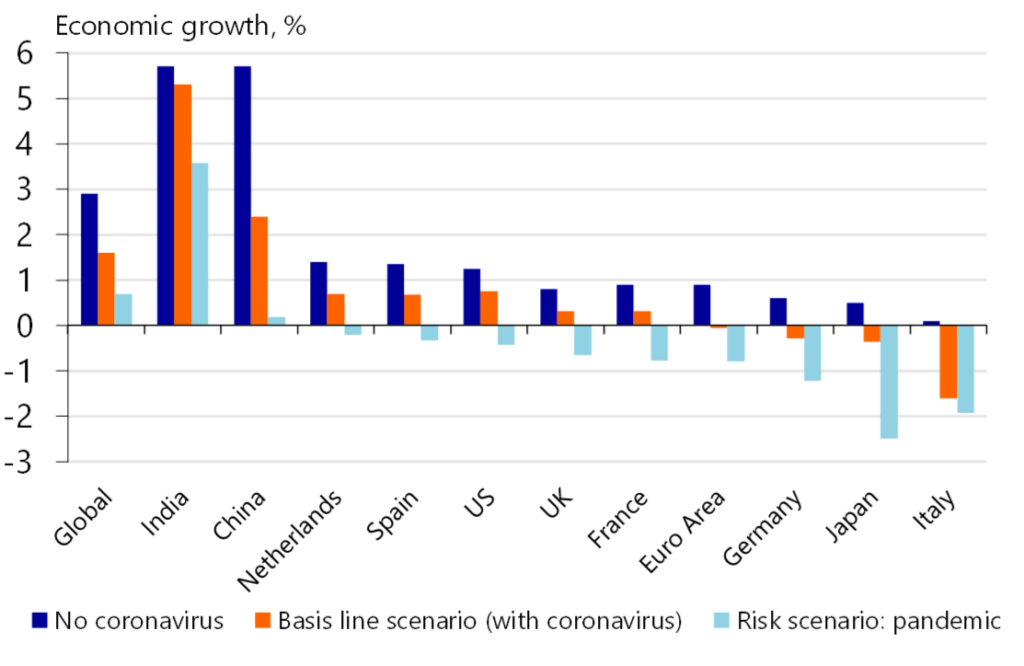Skip to content

SOCIO ECONOMIC CONSEQUENCES OF COVID-19 CRISIS
- (Relevant for Sociology Syllabus: Paper 1 – Social Change in Modern Society ; PAPER-2 – Challenges of Social Transformation)
- (Relevant for GS Syllabus: Paper1- poverty and developmental issues.)

- Since lockdown imposed in the last week of March, the society, as well as the Indian Economy, faced many consequences. The stringent lockdown revealed the pathetic plight of millions of migrated workers with no work in their workplace returning to their respective home villages and towns.
- The workers who migrated from far off states suffered on their way back to native places. The lockdown without prior notice also added to their vows as there was no transport available.
- The migrated workers mostly walked on and on to reach their destinations, some of them died on their way back home.
- In India and also elsewhere in other parts of the world, industry and business is dependent on the migrated workforce from for off places. They are less paid and underprivileged.
- They were easily harassed by their employees and these vulnerable groups of workers have weak bargaining power and they suffered at the hands of the employees with no job guarantee because they belong to the informal sector with unorganized and contract workers, Agricultural labourers, Street Vendors, Seasonally employed workers, Roadside hawkers etc. These underprivileged and historically disadvantaged minorities form a major chunk of workforces in India about 130 million approximately.
- These migrant workers lost jobs in small and medium scale units, road construction, building works, kilns etc. Their kith and Kin in their native places also lost jobs due to the lockdown making poverty even worse in their villages.
- Lack of transport and language barriers also further accelerated their problems in travelling long distances. Some charity organizations in different parts of various states however came to the rescue of these migrants by voluntarily supplying food, clothing and shelter.
- Non-Governmental organization and volunteers of various service organizations came forward to cater to the needs of these migrated workers. Timely and swift measures however were not taken by the Centre and State Governments. Because of lockdown constraints, in some states labour organisation and activists faced repression by states.
- As the unlock process is picking up, the Central Government has run Special trains to facilitate the migrated workers back to their places of work. However, the problems faced by the MSME’s and Civil workers continue as they are still facing scarcity of labour in many places of work.
- The silver lining to the impact of Covid-19 is it has brought the problem of migrated workers into the mainstream policy discussions. Journalists, Scholars and activities have focussed their attention on their problems.
- Online conferences, seminaries and reports are concentrating on the problems of these workers and how best the economy could be back on track. To enhance this, better conditions of work and better wages to be paid to these unorganized workers.
- The oppression these workers are facing should be addressed. Modi’s call for self-reliant Indian Economy with emphasis on small and medium scale industries and enhancing the skill development courses also have a long way to go. The policies are not backed up by financial support to the states.
- To achieve the above said, the economy has to be on track and the manufacturing and service sectors have to be put in the right direction. During the period from April to September, the economy suffered because of low purchasing power, falling productions and as a result supply chain is affected.
- The economic consequences of Covid -19 should be addressed by the Government. The projections of GDP declining by nearly 12% is a sign of the slump in the economy.
- Indian Finance Minister though announced a special package to redeem the vows of medium and small investors. They could not show great impact mainly because of lack of demand in the economy and the supply chain could not be restored as predicted.
- The real- estate and some medium scale units are still suffering due to the non-availability of enough labour and the return of migrant workers back to work from their far-off places. Central government ran some special trains though to speed up the backward migration of these workers from their home villages in Uttar Pradesh, Gujarat, Orissa, Maharashtra and Madhya Pradesh. During this period, the Tourism, Hotel, Real Estate, Health and Recreation industries suffered a lot. Much remains to be done to revive these.
- The effect of Covid-19 has also made state governments vulnerable as far as finances are concerned. Their resources drained and Central Government also delayed sanctioning enough financial resources in time. The surge in the number of cases in all the states has made the conditions worse with increasing financial allotments needed to answer the needs of the suffering patients with more and more relief measures.
- Even the GST arrears were also not released in time. In many states, the budgetary deficits have gone beyond control resulting in the neglect of developmental activities even though unlocking process was done phase-wise. The confidence in invertors was affected by lack of purchasing power by the people.
- Government is planning production linked incentives worth (1.68 trillion Rupees 2.3 million$ to boost) automobile manufacturers, Solar Panel makers and steel to consumer appliance companies. According to a review by Bloomberg News, Textile Units, Food Processing plants, Pharma units are considered for the recovery plan. The Government is planning to give incentives to attract more investments to revive the economy, New Delhi has been planning to attract investments away from China when the Economy contracted 23.9% by September 2020.
- India imported goods worth $65 Billion from China up to March 2020, while its exports stood only at $17 Billion, leaving a huge trade deficit of $48 Billion, according to latest Government data.
- The Agricultural sector value chain has also been adversely affected by Covid-19 crisis and the resultant lockdown. Labour scarcity in the agricultural–oriented states of Punjab, Haryana, A.P, Tamil Nadu has affected the harvesting process in April-June season. Storage units and Milk–Processing plants were also under-staffed.
- The irrigation related manufacturing currently operating only at 30% of potential capacity. The transport sector also was not geared up due to inter-state restrictions. Currently around half-a-million tonnes of Indian rice is locked–up in the supply chains. Perishable crops are also facing transport problem because of delayed transits.
- However, ex-governor, RBI Rangarajan and policy Chief Advisor D.K Srivastava are of the opinion that a small positive growth in 2020-21 is not ruled out. Though World Bank projection is a sharp contraction of 3.2% there are reasons to believe that the outcome may be better.
- The agricultural sector and related sectors, Public Administration, Defence services and other services may perform better than normal given the demand for health services. As gradually unlocking process unfolds, the economy is bound to pick up as investors sentiments regain confidence though the economy suffered a slump during April-June, 2020 with GDP shrinking by 23.9%.
- There is a need to kick-start the economy by increasing Government expenditure at a high level and monetisation of debt is also unavoidable. There is a limit to monetisation and policy maters have to strike an appropriate balance. RBI directly buys government securities from the primary market and in turn prints more money when it tries to bridge the fiscal deficit. The government should aim at sustained growth in the post–Covid era.
- The economic impact of Covid-19 pandemic would vary in different sectors. India needs to track its consumption expenditure along with employment data for policy intervention. There is an enormous and unprecedented economic pain ahead.
- Both governments policies and politics shall play a crucial role in the coming years. Timely economic policies and good politics, however, can ensure that the suffering of the masses is minimised.
- Recently World Bank expects India’s GDP to contract by 3.2% in 2020-21. It is projected that there may be a moderate recovery of 3.5% in 2021-22. When the economy is facing contraction each Sub-sector will have a different impact across states and jobs.
- Regarding employment, some sectors in the economy may have a bigger impact on jobs than others. Job losses in construction works would be far higher then normal in the financial sector. Unless government expenditure is increased and the purchasing power of people gets a boost the productive capacity cannot be pushed ahead.
- Employment–oriented medium and small-scale sectors are to be encouraged by government intervention. Much depends on policymakers to achieve economic recovery in our country.


